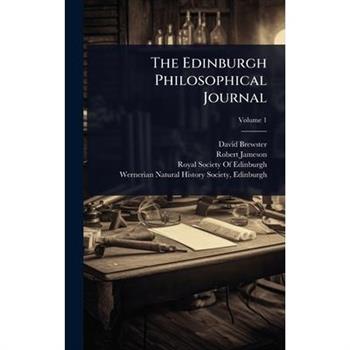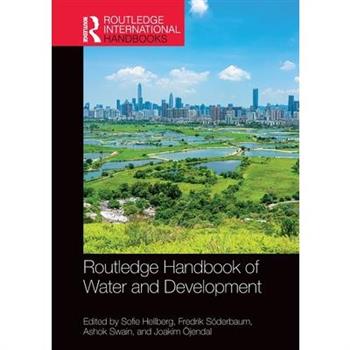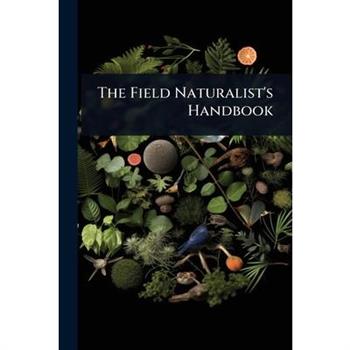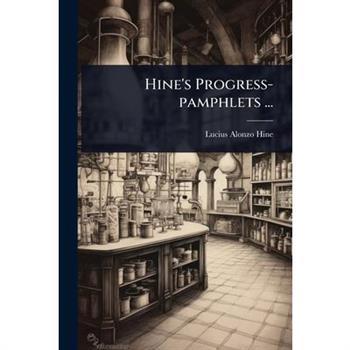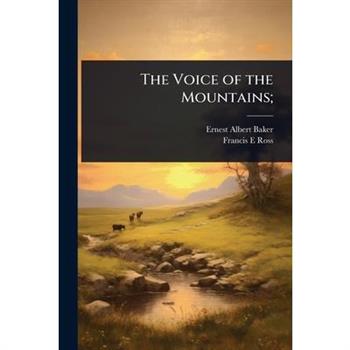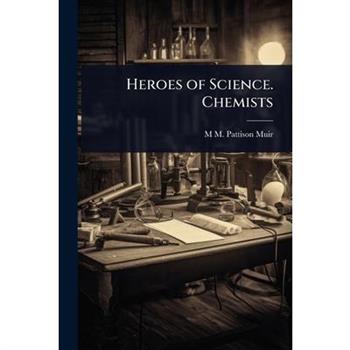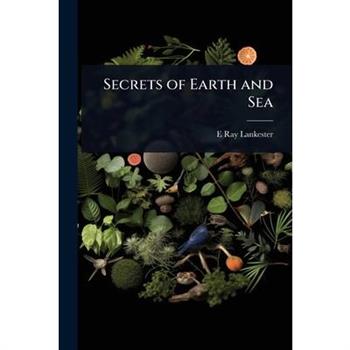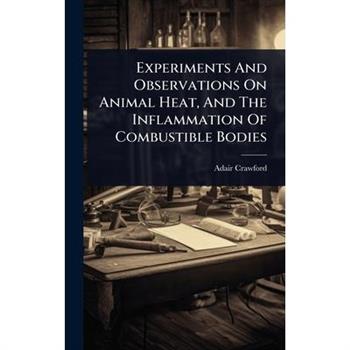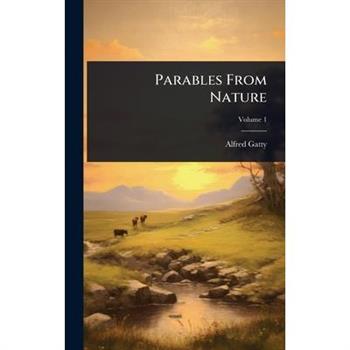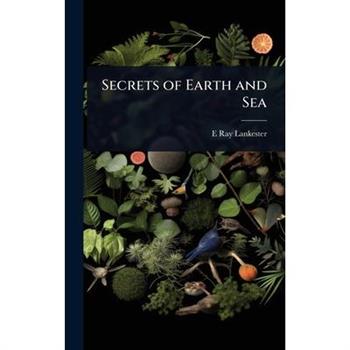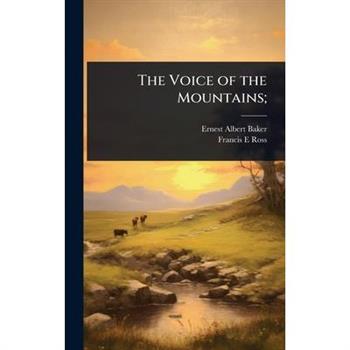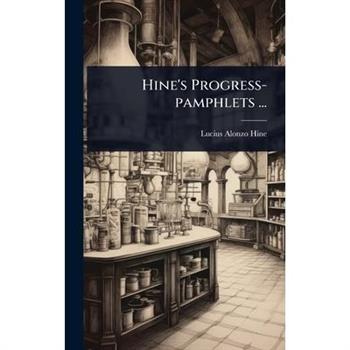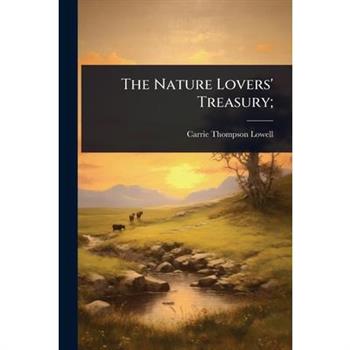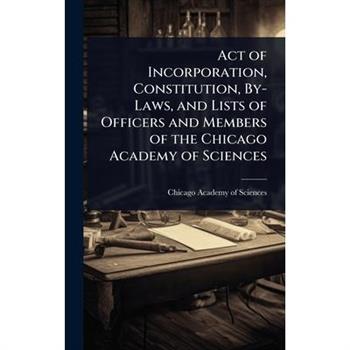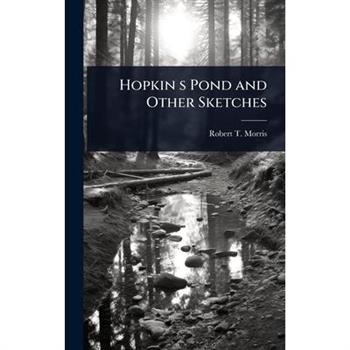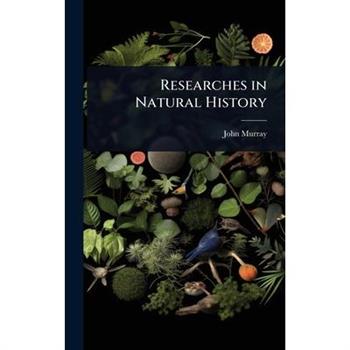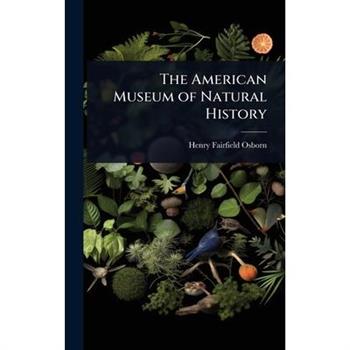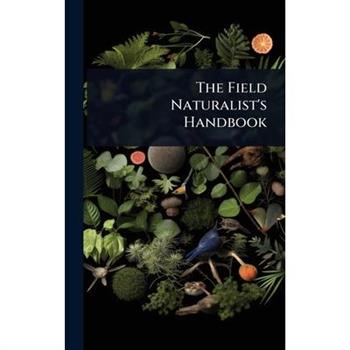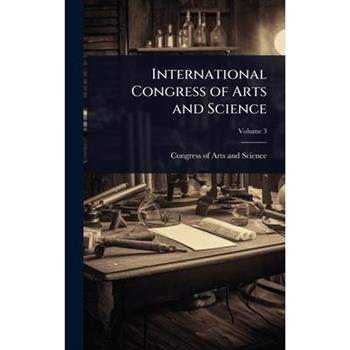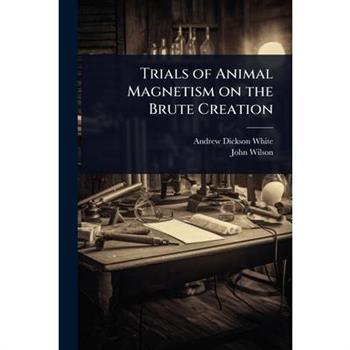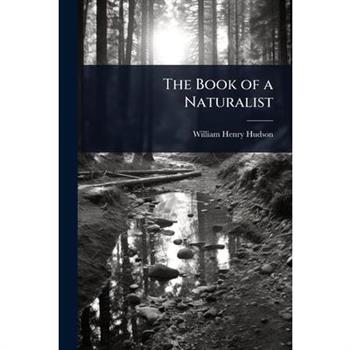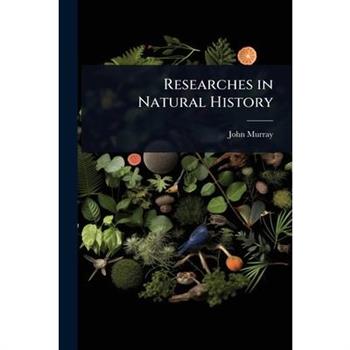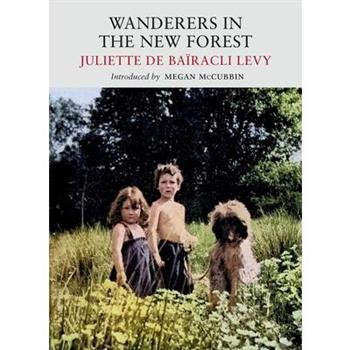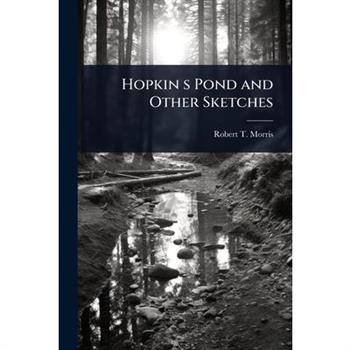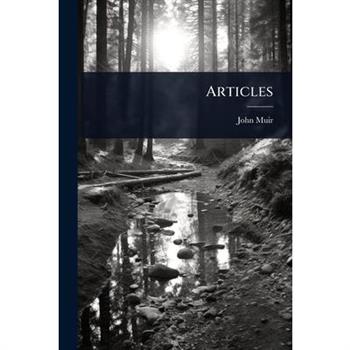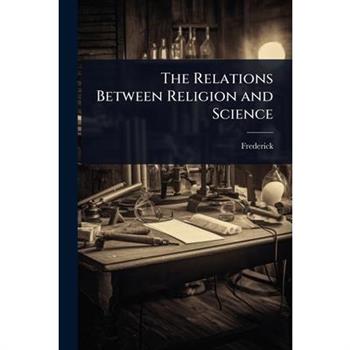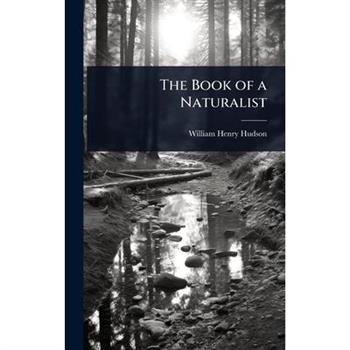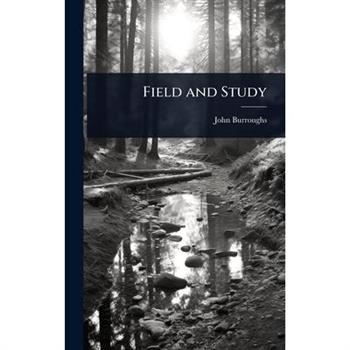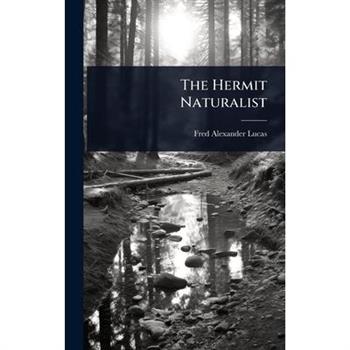The Correspondence of John Ray
"The Correspondence of John Ray" offers a fascinating glimpse into the mind of one of the most important naturalists of the 17th century. This collection comprises selections from the philosophical letters published by Dr. Derham, along with original letters of John Ray sourced from the British Museum. The letters reveal Ray's thoughts on a wide array of scientific topics, providing valuable insights into the development of natural history and early scientific discourse. Readers will find a rich tapestry of intellectual exchange, showcasing Ray's interactions with other leading thinkers of his time. This correspondence is an essential resource for anyone interested in the history of science, the development of natural history, and the life and work of John Ray.This work has been selected by scholars as being culturally important, and is part of the knowledge base of civilization as we know it. This work was reproduced from the original artifact, and remains as true to the original work as possible. Therefore, you will see the original copyright references, library stamps (as most of these works have been housed in our most important libraries around the world), and other notations in the work.This work is in the public domain in the United States of America, and possibly other nations. Within the United States, you may freely copy and distribute this work, as no entity (individual or corporate) has a copyright on the body of the work.As a reproduction of a historical artifact, this work may contain missing or blurred pages, poor pictures, errant marks, etc. Scholars believe, and we concur, that this work is important enough to be preserved, reproduced, and made generally available to the public. We appreciate your support of the preservation process, and thank you for being an important part of keeping this knowledge alive and relevant.
The Edinburgh Philosophical Journal
The Edinburgh Philosophical Journal, Volume 1, published in 1819, presents a fascinating snapshot of early 19th-century scientific and philosophical thought. Edited by David Brewster and Robert Jameson, in conjunction with the Royal Society of Edinburgh and the Wernerian Natural History Society, this volume captures a pivotal moment in the history of science. The journal features articles and discussions reflecting the era's key intellectual debates across diverse scientific disciplines. This volume offers invaluable insights into the historical development of scientific inquiry and the evolution of philosophical thought, making it an essential resource for historians of science, philosophers, and anyone interested in the intellectual landscape of the early 19th century.This work has been selected by scholars as being culturally important, and is part of the knowledge base of civilization as we know it. This work was reproduced from the original artifact, and remains as true to the original work as possible. Therefore, you will see the original copyright references, library stamps (as most of these works have been housed in our most important libraries around the world), and other notations in the work.This work is in the public domain in the United States of America, and possibly other nations. Within the United States, you may freely copy and distribute this work, as no entity (individual or corporate) has a copyright on the body of the work.As a reproduction of a historical artifact, this work may contain missing or blurred pages, poor pictures, errant marks, etc. Scholars believe, and we concur, that this work is important enough to be preserved, reproduced, and made generally available to the public. We appreciate your support of the preservation process, and thank you for being an important part of keeping this knowledge alive and relevant.
The Works of John Playfair ...
This is Volume 2 of 璽€œThe Works of John Playfair, 璽€ a collection of scientific writings by the eminent Scottish scientist and mathematician. This volume includes a memoir of the author, providing insights into his life and intellectual development. John Playfair (1748-1819) was a professor of mathematics and natural philosophy at the University of Edinburgh, and a key figure in the Scottish Enlightenment. His works cover a wide range of scientific topics, reflecting the intellectual curiosity and rigor of his time. This collection offers readers a chance to engage with the ideas and arguments of a leading scientific mind of the early 19th century.This work has been selected by scholars as being culturally important, and is part of the knowledge base of civilization as we know it. This work was reproduced from the original artifact, and remains as true to the original work as possible. Therefore, you will see the original copyright references, library stamps (as most of these works have been housed in our most important libraries around the world), and other notations in the work.This work is in the public domain in the United States of America, and possibly other nations. Within the United States, you may freely copy and distribute this work, as no entity (individual or corporate) has a copyright on the body of the work.As a reproduction of a historical artifact, this work may contain missing or blurred pages, poor pictures, errant marks, etc. Scholars believe, and we concur, that this work is important enough to be preserved, reproduced, and made generally available to the public. We appreciate your support of the preservation process, and thank you for being an important part of keeping this knowledge alive and relevant.
Annals of Electricity, Magnetism, and Chemistry
Delve into the groundbreaking world of 19th-century science with 璽€œAnnals of Electricity, Magnetism, and Chemistry, Volume 3, 璽€ edited by William Sturgeon. This historical record offers a detailed look at the scientific advancements and experiments that shaped our understanding of electricity, magnetism, and chemistry. A valuable resource for historians of science and anyone interested in the evolution of scientific thought, this volume captures the spirit of innovation and discovery that characterized the era. Explore the experiments, theories, and debates that laid the foundation for modern science. Experience the intellectual landscape of the 1830s through the writings and research compiled in this essential collection.This work has been selected by scholars as being culturally important, and is part of the knowledge base of civilization as we know it. This work was reproduced from the original artifact, and remains as true to the original work as possible. Therefore, you will see the original copyright references, library stamps (as most of these works have been housed in our most important libraries around the world), and other notations in the work.This work is in the public domain in the United States of America, and possibly other nations. Within the United States, you may freely copy and distribute this work, as no entity (individual or corporate) has a copyright on the body of the work.As a reproduction of a historical artifact, this work may contain missing or blurred pages, poor pictures, errant marks, etc. Scholars believe, and we concur, that this work is important enough to be preserved, reproduced, and made generally available to the public. We appreciate your support of the preservation process, and thank you for being an important part of keeping this knowledge alive and relevant.
Strength and Elasticity of Structural Members
This work has been selected by scholars as being culturally important, and is part of the knowledge base of civilization as we know it. This work was reproduced from the original artifact, and remains as true to the original work as possible. Therefore, you will see the original copyright references, library stamps (as most of these works have been housed in our most important libraries around the world), and other notations in the work.This work is in the public domain in the United States of America, and possibly other nations. Within the United States, you may freely copy and distribute this work, as no entity (individual or corporate) has a copyright on the body of the work.As a reproduction of a historical artifact, this work may contain missing or blurred pages, poor pictures, errant marks, etc. Scholars believe, and we concur, that this work is important enough to be preserved, reproduced, and made generally available to the public. We appreciate your support of the preservation process, and thank you for being an important part of keeping this knowledge alive and relevant.
The Writings of John Burroughs
Delve into the profound observations and lyrical prose of John Burroughs in Volume 17 of "The Writings of John Burroughs." This collection of essays captures the essence of nature through the eyes of one of America's most beloved naturalists. Burroughs' keen insights and eloquent style bring the natural world to life, inviting readers to explore the beauty and complexity of their surroundings.Originally published in 1913, these essays offer a timeless perspective on the environment and our place within it. Whether you're a seasoned naturalist or simply appreciate thoughtful reflections on life, this volume promises to enrich your understanding and appreciation of the world around you. Experience the enduring appeal of Burroughs' writing and discover why he remains a cherished voice in American literature.This work has been selected by scholars as being culturally important, and is part of the knowledge base of civilization as we know it. This work was reproduced from the original artifact, and remains as true to the original work as possible. Therefore, you will see the original copyright references, library stamps (as most of these works have been housed in our most important libraries around the world), and other notations in the work.This work is in the public domain in the United States of America, and possibly other nations. Within the United States, you may freely copy and distribute this work, as no entity (individual or corporate) has a copyright on the body of the work.As a reproduction of a historical artifact, this work may contain missing or blurred pages, poor pictures, errant marks, etc. Scholars believe, and we concur, that this work is important enough to be preserved, reproduced, and made generally available to the public. We appreciate your support of the preservation process, and thank you for being an important part of keeping this knowledge alive and relevant.
Beyond Equilibria
Ecologists and evolutionary biologists, especially those with theoretical and mathematical leanings, have tended to dismiss historical approaches as descriptive, smacking of particularities, allowing few generalizations (or even being untestable), and even antithetical to scientific explanation. By contrast, the concept of biological equilibrium pervades every aspect of ecology and evolution, from the popular notion of the 'balance of nature' to sophisticated mathematical analyses of critical points in the state space of scientific models. This novel book explains the problems associated with an over-reliance on equilibrium-centred explanations, creating a persuasive argument that an explicit consideration of history - i.e. looking beyond the equilibrium - will often lead to a deeper, more nuanced understanding of almost every eco-evolutionary system. The author introduces the concept of 'flavours' of history - the variety of ways in which history can play a critical role in biological processes. Like the flavours of our food, these historical flavours may not always be distinct: they may be blended or overlapping and any number may be present. However, distinguishing between historical flavours is of practical use in explicating ecological and evolutionary phenomena. Beyond Equilibria: Historical Approaches to Ecology and Evolution is aimed at a broad audience of graduate students and researchers in ecology and evolution. Although there is extensive discussion of mathematical models, the material is presented in such a way that no detailed knowledge is needed. The book will be particularly suitable for a graduate-level discussion course.
Routledge Handbook of Water and Development
Water is essential for human life and at the centre of political, economic and socio-cultural development. This Routledge Handbook on Water and Development offers a systematic, wide-ranging and state-of-the-art guide to the diverse links between water and development across the globe.
Touched / Tocado
Laguna San Ignacio, a UNESCO World Heritage Site, comes alive in the essays within Touched/Tocado. Michael Branch writes the essays are "ingeniously organized as a four-stranded narrative which deftly braids the perspectives of a poet, a cetologist, a fisherman, and an activist to offer an informative and inspiring story of how this unique whale nursery was protected and preserved." ENGLISHLaguna San Ignacio, along the Pacific coast of Baja California, Mexico, is one of the most extraordinary places in the world. It is the centerpiece of the Vizca穩no International Biosphere Reserve, which holds beautiful and complex stands of mangroves and dazzling assemblies of seabirds and shorebirds, their wings aglow with ocean light. Within the waters of the Lagoon thrives a full suite of marine life in all its mystery and richness. Not long ago, it was all at risk, but was conserved from ruinous development by a legendary effort of science-based conservation.Such is the setting. The Laguna has an eminent place now not just in Mexico, not just in the Americas, but in the imagination of the world. It is the winter breeding and birthing ground of the gray whale. Just here, and nowhere else on Earth, the whales will approach a boat: they will come to be touched, to play, and to romp and frolic with their newborns, who rise to our hands with antic curiosity and affection. They bring not just themselves: they bring a new world, the one even now in creation. Here is the Laguna. It is a place of transformative power and beauty, of wonderment of being literally in touch with so intelligent and generous a life form. This book is meant to show the whole: in four essays, it unites spirit, science, people, and activism. It is the union we can use to make a future together. A Non-Profit Publication - Proceeds will be donated to gray whale research and programs benefitting the community of Ejido Luis Echeverr穩a, Baja California Sur, Mexico. ESPANOLLaguna San Ignacio, a lo largo de la costa del Pac穩fico de Baja California Sur, M矇xico, es uno de los lugares m獺s extraordinarios en el mundo. Es la pieza central de la Reserva de la Biosfera El Vizca穩no, la cual alberga hermosos manglares y deslumbrantes grupos de aves marinas y costeras, con sus alas resplandeciendo con la luz del oc矇ano. Dentro de las aguas de la laguna prospera una gama completa de vida marina, en todo su misterio y riqueza. No hace mucho, todo esto estaba en riesgo, pero fue salvado de un desarrollo ruinoso gracias al esfuerzo legendario de la conservaci籀n basada en la ciencia. Este es el escenario. La laguna ahora tiene un lugar inminente no s籀lo en M矇xico, ni en Am矇rica, sino en la imaginaci籀n del mundo. En invierno es la zona de reproducci籀n y nacimiento de la ballena gris. S籀lo aqu穩, y en ning繳n otro lado en la Tierra, las ballenas se acercan a los botes: se aproximan para ser tocadas, jugar y retozar con sus reci矇n nacidas, las cuales se levantan hacia nuestras manos con mucha curiosidad y afecto. No s籀lo se traen a s穩 mismas: ellas traen un nuevo mundo, el cual a繳n sigue en creaci籀n.Aqu穩 est獺 la laguna. Es un lugar de poder y belleza transformadora, de asombro al estar literalmente en contacto con formas de vida tan inteligentes y generosas. Este libro est獺 dise簽ado para mostrar todo: en cuatro ensayos, une el esp穩ritu, la ciencia, las personas y el activismo. Es la unidad que necesitamos para formar un futuro juntos.Publicaci籀n sin fines de lucro. Las ganancias ser獺n donadas a la investigaci籀n de la ballena gris y programas que beneficien a la comunidad de la laguna.
The Field Naturalist’s Handbook
The Field Naturalist's Handbook is an essential guide for anyone interested in studying the natural world. Whether you are a seasoned researcher or a budding enthusiast, this handbook provides practical advice and methodologies for observing, collecting, and documenting data in the field. Covering a wide range of topics, from plant identification to animal behavior, this book offers invaluable insights into the techniques used by field naturalists. Learn how to properly record observations, prepare specimens, and analyze data to contribute meaningfully to our understanding of the environment. With clear instructions and helpful illustrations, 璽€œThe Field Naturalist's Handbook璽€ is a must-have resource for conducting successful and responsible field studies.This work has been selected by scholars as being culturally important, and is part of the knowledge base of civilization as we know it. This work was reproduced from the original artifact, and remains as true to the original work as possible. Therefore, you will see the original copyright references, library stamps (as most of these works have been housed in our most important libraries around the world), and other notations in the work.This work is in the public domain in the United States of America, and possibly other nations. Within the United States, you may freely copy and distribute this work, as no entity (individual or corporate) has a copyright on the body of the work.As a reproduction of a historical artifact, this work may contain missing or blurred pages, poor pictures, errant marks, etc. Scholars believe, and we concur, that this work is important enough to be preserved, reproduced, and made generally available to the public. We appreciate your support of the preservation process, and thank you for being an important part of keeping this knowledge alive and relevant.
Hine’s Progress-pamphlets ...
"Hine's Progress-pamphlets: Science And Man" presents a collection of thought-provoking essays by Lucius Alonzo Hine. This volume delves into the intricate relationship between scientific advancement and the human condition. Hine explores the philosophical implications of science, contemplating its impact on society and the future of mankind. With insightful observations and forward-thinking perspectives, Hine invites readers to ponder the profound questions raised by our ever-evolving understanding of the world. This collection provides a fascinating glimpse into the intersection of science, philosophy, and humanity.This work has been selected by scholars as being culturally important, and is part of the knowledge base of civilization as we know it. This work was reproduced from the original artifact, and remains as true to the original work as possible. Therefore, you will see the original copyright references, library stamps (as most of these works have been housed in our most important libraries around the world), and other notations in the work.This work is in the public domain in the United States of America, and possibly other nations. Within the United States, you may freely copy and distribute this work, as no entity (individual or corporate) has a copyright on the body of the work.As a reproduction of a historical artifact, this work may contain missing or blurred pages, poor pictures, errant marks, etc. Scholars believe, and we concur, that this work is important enough to be preserved, reproduced, and made generally available to the public. We appreciate your support of the preservation process, and thank you for being an important part of keeping this knowledge alive and relevant.
The Voice of the Mountains;
Explore the majestic allure of the mountains with "The Voice of the Mountains," a collection of essays and travelogues that celebrate the grandeur of nature and the spirit of adventure. Penned by Ernest Albert Baker and Francis E. Ross, this timeless work invites readers to traverse the scenic routes and hidden valleys of Europe, capturing the essence of the mountainous landscapes. Through vivid descriptions and insightful observations, "The Voice of the Mountains" offers a captivating glimpse into the natural world. Perfect for travel enthusiasts and nature lovers alike, this book will inspire you to embark on your own journey of discovery and find solace in the embrace of the mountains. Experience the enduring appeal of the mountains through the eloquent prose and heartfelt appreciation of the authors. A classic exploration of the natural world, resonating with readers seeking inspiration and connection to the earth's most awe-inspiring landscapes.This work has been selected by scholars as being culturally important, and is part of the knowledge base of civilization as we know it. This work was reproduced from the original artifact, and remains as true to the original work as possible. Therefore, you will see the original copyright references, library stamps (as most of these works have been housed in our most important libraries around the world), and other notations in the work.This work is in the public domain in the United States of America, and possibly other nations. Within the United States, you may freely copy and distribute this work, as no entity (individual or corporate) has a copyright on the body of the work.As a reproduction of a historical artifact, this work may contain missing or blurred pages, poor pictures, errant marks, etc. Scholars believe, and we concur, that this work is important enough to be preserved, reproduced, and made generally available to the public. We appreciate your support of the preservation process, and thank you for being an important part of keeping this knowledge alive and relevant.
Heroes of Science. Chemists
"Heroes of Science. Chemists" offers a captivating glimpse into the lives and accomplishments of pioneering figures in the field of chemistry. Written by M.M. Pattison Muir and originally published in 1883, this volume brings to light the historical context and groundbreaking discoveries of influential chemists. Readers will discover the personal stories and scientific contributions that shaped the development of chemistry as a discipline. This book provides valuable insights into the evolution of scientific thought and the enduring legacy of those who dared to explore the mysteries of matter.This work has been selected by scholars as being culturally important, and is part of the knowledge base of civilization as we know it. This work was reproduced from the original artifact, and remains as true to the original work as possible. Therefore, you will see the original copyright references, library stamps (as most of these works have been housed in our most important libraries around the world), and other notations in the work.This work is in the public domain in the United States of America, and possibly other nations. Within the United States, you may freely copy and distribute this work, as no entity (individual or corporate) has a copyright on the body of the work.As a reproduction of a historical artifact, this work may contain missing or blurred pages, poor pictures, errant marks, etc. Scholars believe, and we concur, that this work is important enough to be preserved, reproduced, and made generally available to the public. We appreciate your support of the preservation process, and thank you for being an important part of keeping this knowledge alive and relevant.
Secrets of Earth and Sea
Explore the wonders of the natural world with E. Ray Lankester's "Secrets of Earth and Sea." This insightful work delves into a variety of scientific topics, offering a fascinating look at both terrestrial and marine environments. From the intricacies of geological formations to the mysteries of marine life, Lankester expertly guides readers through complex subjects with clarity and engaging prose.Originally published in the early 20th century, this book remains relevant for anyone interested in understanding the interconnectedness of Earth's ecosystems. Lankester's observations and analyses provide a valuable historical perspective on the development of scientific thought and highlight the enduring importance of environmental stewardship.This work has been selected by scholars as being culturally important, and is part of the knowledge base of civilization as we know it. This work was reproduced from the original artifact, and remains as true to the original work as possible. Therefore, you will see the original copyright references, library stamps (as most of these works have been housed in our most important libraries around the world), and other notations in the work.This work is in the public domain in the United States of America, and possibly other nations. Within the United States, you may freely copy and distribute this work, as no entity (individual or corporate) has a copyright on the body of the work.As a reproduction of a historical artifact, this work may contain missing or blurred pages, poor pictures, errant marks, etc. Scholars believe, and we concur, that this work is important enough to be preserved, reproduced, and made generally available to the public. We appreciate your support of the preservation process, and thank you for being an important part of keeping this knowledge alive and relevant.
The Everyday Naturalist
Learn to identify animals, plants, and fungi wherever you go with this step-by-step guide for spotting and recording key traits and characteristics. If you've ever consulted a field guide to identify a new bird at your feeder, you know the process isn't as easy as it sounds. In fact, it seems like you have to know a lot about that mystery bird to even figure out where to start. The Everyday Naturalist fills in the gaps by explaining what traits to pay attention to when encountering a new species; how and when to use field guides, apps, and other resources; what to do if you get stuck; and more. Rather than focusing on one region or continent, these skills and tools are designed to help you classify nature anywhere you are--whether on familiar territory, traveling, or in a new home. In chapters about animals, plants, fungi, and organisms like lichens and slime molds, naturalist and guide Rebecca Lexa goes into detail about what sets each of these kingdoms apart from each other--from color, shape, and texture to reproductive characteristics, behavior, and habitat--and includes more than forty full-color photos and drawings to illustrate key points. She also provides detailed case studies to demonstrate how to use all of these traits to identify specimens across multiple kingdoms. This easy-to-follow guide empowers you to learn more about the species around you, then use what you know to preserve the world you love. And at a time when biodiversity is imperiled worldwide, nature needs more advocates than ever.
Experiments And Observations On Animal Heat, And The Inflammation Of Combustible Bodies
"Experiments And Observations On Animal Heat, And The Inflammation Of Combustible Bodies" by Adair Crawford presents a detailed investigation into the nature of heat as it relates to both living organisms and chemical reactions. Subtitled "Being An Attempt To Resolve These Phenomena Into A General Law Of Nature," this work delves into experiments designed to understand the fundamental principles governing thermal phenomena.Crawford's experiments provide insights into the understanding of caloric theory and the relationship between respiration and combustion. This book offers valuable context for understanding the scientific advancements of the late 18th century and the evolution of modern thermodynamics and chemistry. It remains relevant for historians of science and anyone interested in the roots of our current scientific knowledge.This work has been selected by scholars as being culturally important, and is part of the knowledge base of civilization as we know it. This work was reproduced from the original artifact, and remains as true to the original work as possible. Therefore, you will see the original copyright references, library stamps (as most of these works have been housed in our most important libraries around the world), and other notations in the work.This work is in the public domain in the United States of America, and possibly other nations. Within the United States, you may freely copy and distribute this work, as no entity (individual or corporate) has a copyright on the body of the work.As a reproduction of a historical artifact, this work may contain missing or blurred pages, poor pictures, errant marks, etc. Scholars believe, and we concur, that this work is important enough to be preserved, reproduced, and made generally available to the public. We appreciate your support of the preservation process, and thank you for being an important part of keeping this knowledge alive and relevant.
The To-morrow of Death, or The Future Life According to Scienc
"The To-morrow of Death, or The Future Life According to Science" explores the intersection of scientific inquiry and humanity's enduring questions about death and the afterlife. Louis Figuier delves into various scientific perspectives to contemplate what might lie beyond mortal existence. This thought-provoking work bridges the gap between empirical observation and spiritual longing, offering a unique viewpoint on a timeless mystery. Figuier examines scientific theories prevalent in his time to speculate on the nature of consciousness, the soul, and the potential for existence beyond physical death. This book remains a fascinating read for those interested in the history of scientific and philosophical thought regarding life's greatest unknown.This work has been selected by scholars as being culturally important, and is part of the knowledge base of civilization as we know it. This work was reproduced from the original artifact, and remains as true to the original work as possible. Therefore, you will see the original copyright references, library stamps (as most of these works have been housed in our most important libraries around the world), and other notations in the work.This work is in the public domain in the United States of America, and possibly other nations. Within the United States, you may freely copy and distribute this work, as no entity (individual or corporate) has a copyright on the body of the work.As a reproduction of a historical artifact, this work may contain missing or blurred pages, poor pictures, errant marks, etc. Scholars believe, and we concur, that this work is important enough to be preserved, reproduced, and made generally available to the public. We appreciate your support of the preservation process, and thank you for being an important part of keeping this knowledge alive and relevant.
Parables From Nature
Parables from Nature, Volume 1, by Alfred Gatty, presents a collection of allegorical short stories designed to impart moral and spiritual lessons through observations of the natural world. Each parable draws upon the behaviors and characteristics of plants, animals, and natural phenomena to illustrate deeper truths about human nature, faith, and the divine order.Written in a simple yet elegant style, these parables offer timeless wisdom suitable for readers of all ages. Gatty璽€(TM)s work reflects a blend of scientific curiosity and religious devotion, inviting readers to find meaning and inspiration in the everyday wonders of nature. These stories encourage contemplation on themes of perseverance, humility, and the interconnectedness of all living things, remaining relevant and thought-provoking for contemporary audiences.This work has been selected by scholars as being culturally important, and is part of the knowledge base of civilization as we know it. This work was reproduced from the original artifact, and remains as true to the original work as possible. Therefore, you will see the original copyright references, library stamps (as most of these works have been housed in our most important libraries around the world), and other notations in the work.This work is in the public domain in the United States of America, and possibly other nations. Within the United States, you may freely copy and distribute this work, as no entity (individual or corporate) has a copyright on the body of the work.As a reproduction of a historical artifact, this work may contain missing or blurred pages, poor pictures, errant marks, etc. Scholars believe, and we concur, that this work is important enough to be preserved, reproduced, and made generally available to the public. We appreciate your support of the preservation process, and thank you for being an important part of keeping this knowledge alive and relevant.
Secrets of Earth and Sea
Explore the wonders of the natural world with E. Ray Lankester's "Secrets of Earth and Sea." This insightful work delves into a variety of scientific topics, offering a fascinating look at both terrestrial and marine environments. From the intricacies of geological formations to the mysteries of marine life, Lankester expertly guides readers through complex subjects with clarity and engaging prose.Originally published in the early 20th century, this book remains relevant for anyone interested in understanding the interconnectedness of Earth's ecosystems. Lankester's observations and analyses provide a valuable historical perspective on the development of scientific thought and highlight the enduring importance of environmental stewardship.This work has been selected by scholars as being culturally important, and is part of the knowledge base of civilization as we know it. This work was reproduced from the original artifact, and remains as true to the original work as possible. Therefore, you will see the original copyright references, library stamps (as most of these works have been housed in our most important libraries around the world), and other notations in the work.This work is in the public domain in the United States of America, and possibly other nations. Within the United States, you may freely copy and distribute this work, as no entity (individual or corporate) has a copyright on the body of the work.As a reproduction of a historical artifact, this work may contain missing or blurred pages, poor pictures, errant marks, etc. Scholars believe, and we concur, that this work is important enough to be preserved, reproduced, and made generally available to the public. We appreciate your support of the preservation process, and thank you for being an important part of keeping this knowledge alive and relevant.
The Voice of the Mountains;
Explore the majestic allure of the mountains with "The Voice of the Mountains," a collection of essays and travelogues that celebrate the grandeur of nature and the spirit of adventure. Penned by Ernest Albert Baker and Francis E. Ross, this timeless work invites readers to traverse the scenic routes and hidden valleys of Europe, capturing the essence of the mountainous landscapes. Through vivid descriptions and insightful observations, "The Voice of the Mountains" offers a captivating glimpse into the natural world. Perfect for travel enthusiasts and nature lovers alike, this book will inspire you to embark on your own journey of discovery and find solace in the embrace of the mountains. Experience the enduring appeal of the mountains through the eloquent prose and heartfelt appreciation of the authors. A classic exploration of the natural world, resonating with readers seeking inspiration and connection to the earth's most awe-inspiring landscapes.This work has been selected by scholars as being culturally important, and is part of the knowledge base of civilization as we know it. This work was reproduced from the original artifact, and remains as true to the original work as possible. Therefore, you will see the original copyright references, library stamps (as most of these works have been housed in our most important libraries around the world), and other notations in the work.This work is in the public domain in the United States of America, and possibly other nations. Within the United States, you may freely copy and distribute this work, as no entity (individual or corporate) has a copyright on the body of the work.As a reproduction of a historical artifact, this work may contain missing or blurred pages, poor pictures, errant marks, etc. Scholars believe, and we concur, that this work is important enough to be preserved, reproduced, and made generally available to the public. We appreciate your support of the preservation process, and thank you for being an important part of keeping this knowledge alive and relevant.
Hine’s Progress-pamphlets ...
"Hine's Progress-pamphlets: Science And Man" presents a collection of thought-provoking essays by Lucius Alonzo Hine. This volume delves into the intricate relationship between scientific advancement and the human condition. Hine explores the philosophical implications of science, contemplating its impact on society and the future of mankind. With insightful observations and forward-thinking perspectives, Hine invites readers to ponder the profound questions raised by our ever-evolving understanding of the world. This collection provides a fascinating glimpse into the intersection of science, philosophy, and humanity.This work has been selected by scholars as being culturally important, and is part of the knowledge base of civilization as we know it. This work was reproduced from the original artifact, and remains as true to the original work as possible. Therefore, you will see the original copyright references, library stamps (as most of these works have been housed in our most important libraries around the world), and other notations in the work.This work is in the public domain in the United States of America, and possibly other nations. Within the United States, you may freely copy and distribute this work, as no entity (individual or corporate) has a copyright on the body of the work.As a reproduction of a historical artifact, this work may contain missing or blurred pages, poor pictures, errant marks, etc. Scholars believe, and we concur, that this work is important enough to be preserved, reproduced, and made generally available to the public. We appreciate your support of the preservation process, and thank you for being an important part of keeping this knowledge alive and relevant.
The To-morrow of Death, or The Future Life According to Scienc
"The To-morrow of Death, or The Future Life According to Science" explores the intersection of scientific inquiry and humanity's enduring questions about death and the afterlife. Louis Figuier delves into various scientific perspectives to contemplate what might lie beyond mortal existence. This thought-provoking work bridges the gap between empirical observation and spiritual longing, offering a unique viewpoint on a timeless mystery. Figuier examines scientific theories prevalent in his time to speculate on the nature of consciousness, the soul, and the potential for existence beyond physical death. This book remains a fascinating read for those interested in the history of scientific and philosophical thought regarding life's greatest unknown.This work has been selected by scholars as being culturally important, and is part of the knowledge base of civilization as we know it. This work was reproduced from the original artifact, and remains as true to the original work as possible. Therefore, you will see the original copyright references, library stamps (as most of these works have been housed in our most important libraries around the world), and other notations in the work.This work is in the public domain in the United States of America, and possibly other nations. Within the United States, you may freely copy and distribute this work, as no entity (individual or corporate) has a copyright on the body of the work.As a reproduction of a historical artifact, this work may contain missing or blurred pages, poor pictures, errant marks, etc. Scholars believe, and we concur, that this work is important enough to be preserved, reproduced, and made generally available to the public. We appreciate your support of the preservation process, and thank you for being an important part of keeping this knowledge alive and relevant.
Faith And Thought
Explore the intersection of faith and reason in Volume 5 of "Faith and Thought", published by the Victoria Institute. This collection of essays delves into the relationship between scientific inquiry and Christian belief, offering insights into historical and contemporary debates. The Victoria Institute, a prominent British scientific and philosophical society, presents thought-provoking perspectives on the compatibility of scientific advancement and religious understanding. Discover a range of viewpoints from leading thinkers, addressing key issues at the nexus of science, philosophy, and Christian theology. This volume provides valuable historical context for understanding ongoing discussions about the role of faith in an age of scientific discovery.This work has been selected by scholars as being culturally important, and is part of the knowledge base of civilization as we know it. This work was reproduced from the original artifact, and remains as true to the original work as possible. Therefore, you will see the original copyright references, library stamps (as most of these works have been housed in our most important libraries around the world), and other notations in the work.This work is in the public domain in the United States of America, and possibly other nations. Within the United States, you may freely copy and distribute this work, as no entity (individual or corporate) has a copyright on the body of the work.As a reproduction of a historical artifact, this work may contain missing or blurred pages, poor pictures, errant marks, etc. Scholars believe, and we concur, that this work is important enough to be preserved, reproduced, and made generally available to the public. We appreciate your support of the preservation process, and thank you for being an important part of keeping this knowledge alive and relevant.
International Congress of Arts and Science
"International Congress of Arts and Science, Volume 3" presents a comprehensive record of the proceedings from the 1904 Congress held in St. Louis, Missouri. This volume offers a unique window into the intellectual landscape of the early 20th century, showcasing discussions and presentations across a wide array of scientific and artistic disciplines. Organized by the Congress of Arts and Science, this collection highlights the era's leading thinkers and their groundbreaking ideas. It remains a valuable resource for historians, scientists, and anyone interested in the development of modern thought and the intersection of arts and science.This work has been selected by scholars as being culturally important, and is part of the knowledge base of civilization as we know it. This work was reproduced from the original artifact, and remains as true to the original work as possible. Therefore, you will see the original copyright references, library stamps (as most of these works have been housed in our most important libraries around the world), and other notations in the work.This work is in the public domain in the United States of America, and possibly other nations. Within the United States, you may freely copy and distribute this work, as no entity (individual or corporate) has a copyright on the body of the work.As a reproduction of a historical artifact, this work may contain missing or blurred pages, poor pictures, errant marks, etc. Scholars believe, and we concur, that this work is important enough to be preserved, reproduced, and made generally available to the public. We appreciate your support of the preservation process, and thank you for being an important part of keeping this knowledge alive and relevant.
The Nature Lovers’ Treasury;
"The Nature Lovers' Treasury" by Carrie Thompson Lowell, published in 1906, is a curated collection of essays, poems, and quotations celebrating the natural world. This anthology gathers the insights and observations of various writers and thinkers, offering a diverse perspective on nature's beauty and significance. Readers will find reflections on landscapes, wildlife, and the changing seasons, presented in an accessible and engaging format. Ideal for those who appreciate the beauty of the outdoors and the wisdom of those who have contemplated it, this treasury offers a timeless exploration of our relationship with nature. The book serves as a reminder of nature's enduring appeal and the importance of preserving it for future generations.This work has been selected by scholars as being culturally important, and is part of the knowledge base of civilization as we know it. This work was reproduced from the original artifact, and remains as true to the original work as possible. Therefore, you will see the original copyright references, library stamps (as most of these works have been housed in our most important libraries around the world), and other notations in the work.This work is in the public domain in the United States of America, and possibly other nations. Within the United States, you may freely copy and distribute this work, as no entity (individual or corporate) has a copyright on the body of the work.As a reproduction of a historical artifact, this work may contain missing or blurred pages, poor pictures, errant marks, etc. Scholars believe, and we concur, that this work is important enough to be preserved, reproduced, and made generally available to the public. We appreciate your support of the preservation process, and thank you for being an important part of keeping this knowledge alive and relevant.
Trials of Animal Magnetism on the Brute Creation
"Trials of Animal Magnetism on the Brute Creation" delves into the fascinating and controversial topic of animal magnetism, a pseudoscientific practice popularized in the 19th century. This historical work examines the experiments conducted to test the effects of mesmerism on animals. Authored by Andrew Dickson White and John Wilson, the book provides valuable insight into the scientific debates and beliefs of the time. Readers interested in the history of science, particularly the study of now-discredited theories, will find this book a compelling exploration of a bygone era. The authors meticulously document the trials, offering a glimpse into the mindset of researchers and the broader cultural context in which these experiments were conducted. This work remains a valuable resource for understanding the evolution of scientific thought and the enduring human quest to understand the natural world.This work has been selected by scholars as being culturally important, and is part of the knowledge base of civilization as we know it. This work was reproduced from the original artifact, and remains as true to the original work as possible. Therefore, you will see the original copyright references, library stamps (as most of these works have been housed in our most important libraries around the world), and other notations in the work.This work is in the public domain in the United States of America, and possibly other nations. Within the United States, you may freely copy and distribute this work, as no entity (individual or corporate) has a copyright on the body of the work.As a reproduction of a historical artifact, this work may contain missing or blurred pages, poor pictures, errant marks, etc. Scholars believe, and we concur, that this work is important enough to be preserved, reproduced, and made generally available to the public. We appreciate your support of the preservation process, and thank you for being an important part of keeping this knowledge alive and relevant.
Act of Incorporation, Constitution, By-Laws, and Lists of Officers and Members of the Chicago Academy of Sciences
This volume offers a comprehensive look at the early years of the Chicago Academy of Sciences. It includes the 璽€œAct of Incorporation, 璽€ the institution's constitution, by-laws, and lists of officers and members. Also featured is a historical sketch detailing the association璽€(TM)s origins and development, along with detailed reports on the museum and library collections.Providing insight into the intellectual and scientific life of 19th-century Chicago, this book is a valuable resource for historians of science, museum studies scholars, and anyone interested in the history of scientific institutions in the Midwest.This work has been selected by scholars as being culturally important, and is part of the knowledge base of civilization as we know it. This work was reproduced from the original artifact, and remains as true to the original work as possible. Therefore, you will see the original copyright references, library stamps (as most of these works have been housed in our most important libraries around the world), and other notations in the work.This work is in the public domain in the United States of America, and possibly other nations. Within the United States, you may freely copy and distribute this work, as no entity (individual or corporate) has a copyright on the body of the work.As a reproduction of a historical artifact, this work may contain missing or blurred pages, poor pictures, errant marks, etc. Scholars believe, and we concur, that this work is important enough to be preserved, reproduced, and made generally available to the public. We appreciate your support of the preservation process, and thank you for being an important part of keeping this knowledge alive and relevant.
Hopkin s Pond and Other Sketches
璽€œHopkin's Pond and Other Sketches璽€ offers a series of charming and insightful observations on nature and rural life. Written by Robert T. Morris, the collection reflects the serene beauty of the natural world through a series of evocative sketches. The essays capture the essence of late 19th-century America, providing a window into a simpler time when the rhythms of daily life were closely tied to the land. Morris's keen eye and thoughtful prose invite readers to pause and appreciate the delicate balance of the environment, making this a timeless exploration of the outdoors and the human connection to it. This work has been selected by scholars as being culturally important, and is part of the knowledge base of civilization as we know it. This work was reproduced from the original artifact, and remains as true to the original work as possible. Therefore, you will see the original copyright references, library stamps (as most of these works have been housed in our most important libraries around the world), and other notations in the work.This work is in the public domain in the United States of America, and possibly other nations. Within the United States, you may freely copy and distribute this work, as no entity (individual or corporate) has a copyright on the body of the work.As a reproduction of a historical artifact, this work may contain missing or blurred pages, poor pictures, errant marks, etc. Scholars believe, and we concur, that this work is important enough to be preserved, reproduced, and made generally available to the public. We appreciate your support of the preservation process, and thank you for being an important part of keeping this knowledge alive and relevant.
Researches in Natural History
"Researches in Natural History" by John Murray offers a fascinating glimpse into the scientific inquiries of the early 19th century. This collection of essays explores various aspects of the natural world, reflecting the era's burgeoning interest in empirical observation and scientific understanding. Murray's work captures the spirit of discovery that characterized the period, making it a valuable resource for those interested in the history of science and the evolution of natural history as a discipline. The book provides insights into the methodologies and perspectives of early researchers, showcasing their attempts to unravel the mysteries of the natural world. A compelling read for anyone interested in the historical roots of modern scientific thought.This work has been selected by scholars as being culturally important, and is part of the knowledge base of civilization as we know it. This work was reproduced from the original artifact, and remains as true to the original work as possible. Therefore, you will see the original copyright references, library stamps (as most of these works have been housed in our most important libraries around the world), and other notations in the work.This work is in the public domain in the United States of America, and possibly other nations. Within the United States, you may freely copy and distribute this work, as no entity (individual or corporate) has a copyright on the body of the work.As a reproduction of a historical artifact, this work may contain missing or blurred pages, poor pictures, errant marks, etc. Scholars believe, and we concur, that this work is important enough to be preserved, reproduced, and made generally available to the public. We appreciate your support of the preservation process, and thank you for being an important part of keeping this knowledge alive and relevant.
The American Museum of Natural History
Explore the fascinating origins and development of one of the world's leading scientific institutions in "The American Museum of Natural History: Its Origin, Its History, the Growth of Its Departments to December 31, 1909" by Henry Fairfield Osborn. This meticulously detailed account chronicles the museum's journey from its inception to the close of 1909, providing invaluable insights into its foundational years. Discover the dedicated individuals who shaped its collections and established its reputation for scientific excellence. Osborn's work is more than a historical record; it is a celebration of scientific inquiry and the enduring quest to understand the natural world. This book offers a unique glimpse into the museum's early departments, showcasing the growth and evolution of its diverse collections. A must-read for historians of science, museum enthusiasts, and anyone interested in the rich cultural landscape of New York City.This work has been selected by scholars as being culturally important, and is part of the knowledge base of civilization as we know it. This work was reproduced from the original artifact, and remains as true to the original work as possible. Therefore, you will see the original copyright references, library stamps (as most of these works have been housed in our most important libraries around the world), and other notations in the work.This work is in the public domain in the United States of America, and possibly other nations. Within the United States, you may freely copy and distribute this work, as no entity (individual or corporate) has a copyright on the body of the work.As a reproduction of a historical artifact, this work may contain missing or blurred pages, poor pictures, errant marks, etc. Scholars believe, and we concur, that this work is important enough to be preserved, reproduced, and made generally available to the public. We appreciate your support of the preservation process, and thank you for being an important part of keeping this knowledge alive and relevant.
Charles Darwin and the Theory of Natural Selection
Explore the life and groundbreaking work of one of history's most influential scientists in "Charles Darwin and the Theory of Natural Selection" by Edward Bagnall Poulton. This concise biography delves into Darwin's revolutionary ideas, tracing the development of his theory of natural selection and its profound impact on our understanding of the natural world. Poulton's work offers readers a clear and accessible overview of Darwin's life, research, and the scientific context in which he worked. A valuable resource for anyone interested in the history of science, evolutionary biology, or the life of Charles Darwin, this volume provides essential insights into the man and the theory that forever changed our perception of life on Earth.This work has been selected by scholars as being culturally important, and is part of the knowledge base of civilization as we know it. This work was reproduced from the original artifact, and remains as true to the original work as possible. Therefore, you will see the original copyright references, library stamps (as most of these works have been housed in our most important libraries around the world), and other notations in the work.This work is in the public domain in the United States of America, and possibly other nations. Within the United States, you may freely copy and distribute this work, as no entity (individual or corporate) has a copyright on the body of the work.As a reproduction of a historical artifact, this work may contain missing or blurred pages, poor pictures, errant marks, etc. Scholars believe, and we concur, that this work is important enough to be preserved, reproduced, and made generally available to the public. We appreciate your support of the preservation process, and thank you for being an important part of keeping this knowledge alive and relevant.
The Field Naturalist’s Handbook
The Field Naturalist's Handbook is an essential guide for anyone interested in studying the natural world. Whether you are a seasoned researcher or a budding enthusiast, this handbook provides practical advice and methodologies for observing, collecting, and documenting data in the field. Covering a wide range of topics, from plant identification to animal behavior, this book offers invaluable insights into the techniques used by field naturalists. Learn how to properly record observations, prepare specimens, and analyze data to contribute meaningfully to our understanding of the environment. With clear instructions and helpful illustrations, 璽€œThe Field Naturalist's Handbook璽€ is a must-have resource for conducting successful and responsible field studies.This work has been selected by scholars as being culturally important, and is part of the knowledge base of civilization as we know it. This work was reproduced from the original artifact, and remains as true to the original work as possible. Therefore, you will see the original copyright references, library stamps (as most of these works have been housed in our most important libraries around the world), and other notations in the work.This work is in the public domain in the United States of America, and possibly other nations. Within the United States, you may freely copy and distribute this work, as no entity (individual or corporate) has a copyright on the body of the work.As a reproduction of a historical artifact, this work may contain missing or blurred pages, poor pictures, errant marks, etc. Scholars believe, and we concur, that this work is important enough to be preserved, reproduced, and made generally available to the public. We appreciate your support of the preservation process, and thank you for being an important part of keeping this knowledge alive and relevant.
International Congress of Arts and Science
"International Congress of Arts and Science, Volume 3" presents a comprehensive record of the proceedings from the 1904 Congress held in St. Louis, Missouri. This volume offers a unique window into the intellectual landscape of the early 20th century, showcasing discussions and presentations across a wide array of scientific and artistic disciplines. Organized by the Congress of Arts and Science, this collection highlights the era's leading thinkers and their groundbreaking ideas. It remains a valuable resource for historians, scientists, and anyone interested in the development of modern thought and the intersection of arts and science.This work has been selected by scholars as being culturally important, and is part of the knowledge base of civilization as we know it. This work was reproduced from the original artifact, and remains as true to the original work as possible. Therefore, you will see the original copyright references, library stamps (as most of these works have been housed in our most important libraries around the world), and other notations in the work.This work is in the public domain in the United States of America, and possibly other nations. Within the United States, you may freely copy and distribute this work, as no entity (individual or corporate) has a copyright on the body of the work.As a reproduction of a historical artifact, this work may contain missing or blurred pages, poor pictures, errant marks, etc. Scholars believe, and we concur, that this work is important enough to be preserved, reproduced, and made generally available to the public. We appreciate your support of the preservation process, and thank you for being an important part of keeping this knowledge alive and relevant.
Act of Incorporation, Constitution, By-Laws, and Lists of Officers and Members of the Chicago Academy of Sciences
This volume offers a comprehensive look at the early years of the Chicago Academy of Sciences. It includes the 璽€œAct of Incorporation, 璽€ the institution's constitution, by-laws, and lists of officers and members. Also featured is a historical sketch detailing the association璽€(TM)s origins and development, along with detailed reports on the museum and library collections.Providing insight into the intellectual and scientific life of 19th-century Chicago, this book is a valuable resource for historians of science, museum studies scholars, and anyone interested in the history of scientific institutions in the Midwest.This work has been selected by scholars as being culturally important, and is part of the knowledge base of civilization as we know it. This work was reproduced from the original artifact, and remains as true to the original work as possible. Therefore, you will see the original copyright references, library stamps (as most of these works have been housed in our most important libraries around the world), and other notations in the work.This work is in the public domain in the United States of America, and possibly other nations. Within the United States, you may freely copy and distribute this work, as no entity (individual or corporate) has a copyright on the body of the work.As a reproduction of a historical artifact, this work may contain missing or blurred pages, poor pictures, errant marks, etc. Scholars believe, and we concur, that this work is important enough to be preserved, reproduced, and made generally available to the public. We appreciate your support of the preservation process, and thank you for being an important part of keeping this knowledge alive and relevant.
Trials of Animal Magnetism on the Brute Creation
"Trials of Animal Magnetism on the Brute Creation" delves into the fascinating and controversial topic of animal magnetism, a pseudoscientific practice popularized in the 19th century. This historical work examines the experiments conducted to test the effects of mesmerism on animals. Authored by Andrew Dickson White and John Wilson, the book provides valuable insight into the scientific debates and beliefs of the time. Readers interested in the history of science, particularly the study of now-discredited theories, will find this book a compelling exploration of a bygone era. The authors meticulously document the trials, offering a glimpse into the mindset of researchers and the broader cultural context in which these experiments were conducted. This work remains a valuable resource for understanding the evolution of scientific thought and the enduring human quest to understand the natural world.This work has been selected by scholars as being culturally important, and is part of the knowledge base of civilization as we know it. This work was reproduced from the original artifact, and remains as true to the original work as possible. Therefore, you will see the original copyright references, library stamps (as most of these works have been housed in our most important libraries around the world), and other notations in the work.This work is in the public domain in the United States of America, and possibly other nations. Within the United States, you may freely copy and distribute this work, as no entity (individual or corporate) has a copyright on the body of the work.As a reproduction of a historical artifact, this work may contain missing or blurred pages, poor pictures, errant marks, etc. Scholars believe, and we concur, that this work is important enough to be preserved, reproduced, and made generally available to the public. We appreciate your support of the preservation process, and thank you for being an important part of keeping this knowledge alive and relevant.
The Book of a Naturalist
璽€œThe Book of a Naturalist璽€ is a collection of insightful essays by William Henry Hudson, one of the foremost nature writers of his time. First published in 1919, the book showcases Hudson's keen observations and deep appreciation for the natural world. Through vivid descriptions and thoughtful reflections, Hudson explores the beauty and wonder found in the British countryside, offering readers a glimpse into a world often overlooked. From birds and insects to landscapes and seasons, each essay reveals Hudson's intimate connection to nature and his passionate advocacy for its preservation. A timeless classic, 璽€œThe Book of a Naturalist璽€ continues to inspire readers to connect with the natural world and to appreciate its inherent value.This work has been selected by scholars as being culturally important, and is part of the knowledge base of civilization as we know it. This work was reproduced from the original artifact, and remains as true to the original work as possible. Therefore, you will see the original copyright references, library stamps (as most of these works have been housed in our most important libraries around the world), and other notations in the work.This work is in the public domain in the United States of America, and possibly other nations. Within the United States, you may freely copy and distribute this work, as no entity (individual or corporate) has a copyright on the body of the work.As a reproduction of a historical artifact, this work may contain missing or blurred pages, poor pictures, errant marks, etc. Scholars believe, and we concur, that this work is important enough to be preserved, reproduced, and made generally available to the public. We appreciate your support of the preservation process, and thank you for being an important part of keeping this knowledge alive and relevant.
The Hermit Naturalist
"The Hermit Naturalist" is a collection of engaging essays by Fred Alexander Lucas, originally published in 1899. These essays invite readers to explore the wonders of the natural world through keen observation and thoughtful reflection. Lucas's work captures the spirit of late 19th-century natural history writing, offering insights into a variety of topics from birds and mammals to the intricacies of marine life. His accessible prose and enthusiasm for his subjects make this volume a timeless read for anyone with an interest in science and the outdoors.This work has been selected by scholars as being culturally important, and is part of the knowledge base of civilization as we know it. This work was reproduced from the original artifact, and remains as true to the original work as possible. Therefore, you will see the original copyright references, library stamps (as most of these works have been housed in our most important libraries around the world), and other notations in the work.This work is in the public domain in the United States of America, and possibly other nations. Within the United States, you may freely copy and distribute this work, as no entity (individual or corporate) has a copyright on the body of the work.As a reproduction of a historical artifact, this work may contain missing or blurred pages, poor pictures, errant marks, etc. Scholars believe, and we concur, that this work is important enough to be preserved, reproduced, and made generally available to the public. We appreciate your support of the preservation process, and thank you for being an important part of keeping this knowledge alive and relevant.
Charles Darwin and the Theory of Natural Selection
Explore the life and groundbreaking work of one of history's most influential scientists in "Charles Darwin and the Theory of Natural Selection" by Edward Bagnall Poulton. This concise biography delves into Darwin's revolutionary ideas, tracing the development of his theory of natural selection and its profound impact on our understanding of the natural world. Poulton's work offers readers a clear and accessible overview of Darwin's life, research, and the scientific context in which he worked. A valuable resource for anyone interested in the history of science, evolutionary biology, or the life of Charles Darwin, this volume provides essential insights into the man and the theory that forever changed our perception of life on Earth.This work has been selected by scholars as being culturally important, and is part of the knowledge base of civilization as we know it. This work was reproduced from the original artifact, and remains as true to the original work as possible. Therefore, you will see the original copyright references, library stamps (as most of these works have been housed in our most important libraries around the world), and other notations in the work.This work is in the public domain in the United States of America, and possibly other nations. Within the United States, you may freely copy and distribute this work, as no entity (individual or corporate) has a copyright on the body of the work.As a reproduction of a historical artifact, this work may contain missing or blurred pages, poor pictures, errant marks, etc. Scholars believe, and we concur, that this work is important enough to be preserved, reproduced, and made generally available to the public. We appreciate your support of the preservation process, and thank you for being an important part of keeping this knowledge alive and relevant.
Researches in Natural History
"Researches in Natural History" by John Murray offers a fascinating glimpse into the scientific inquiries of the early 19th century. This collection of essays explores various aspects of the natural world, reflecting the era's burgeoning interest in empirical observation and scientific understanding. Murray's work captures the spirit of discovery that characterized the period, making it a valuable resource for those interested in the history of science and the evolution of natural history as a discipline. The book provides insights into the methodologies and perspectives of early researchers, showcasing their attempts to unravel the mysteries of the natural world. A compelling read for anyone interested in the historical roots of modern scientific thought.This work has been selected by scholars as being culturally important, and is part of the knowledge base of civilization as we know it. This work was reproduced from the original artifact, and remains as true to the original work as possible. Therefore, you will see the original copyright references, library stamps (as most of these works have been housed in our most important libraries around the world), and other notations in the work.This work is in the public domain in the United States of America, and possibly other nations. Within the United States, you may freely copy and distribute this work, as no entity (individual or corporate) has a copyright on the body of the work.As a reproduction of a historical artifact, this work may contain missing or blurred pages, poor pictures, errant marks, etc. Scholars believe, and we concur, that this work is important enough to be preserved, reproduced, and made generally available to the public. We appreciate your support of the preservation process, and thank you for being an important part of keeping this knowledge alive and relevant.
Wanderers in the New Forest
Known as the 'grandmother of herbalism', Juliette de Ba簿racli Levy travelled throughout Europe and North America in pursuit of her passion for herbs and holistic medicine, living mostly in rural places whose nomadic communities helped expand her knowledge of plants and living from the land. In the early 1950s, she settled in a thatched 'cabin' in the New Forest for three years and raised her children in the woods.Originally published in 1958, Wanderers in the New Forest describes an extraordinary family life living wild: drawing spring water from Abbots Well, bathing in Windmill Hill Pond and sharing the water with their animal neighbours, foraging for fruits and fungi or tending to their forest garden of herbs, flowers and vegetables.Juliette's friendships within the local traveller community enabled her to record the impact that post-war modernisation was having on their traditions, ancient rights and intimate knowledge of the New Forest. Thisnew edition is illustrated throughout with photographs taken by Juliette while living in the forest.
The Dispersal Of Shells
璽€œThe Dispersal of Shells璽€ by Alfred Russel Wallace, originally published in 1893, explores the fascinating world of mollusks and their distribution across the globe. Wallace, a contemporary of Charles Darwin and a key figure in the development of evolutionary theory, brings his keen observational skills and scientific insight to this study of shells. This book delves into the various mechanisms by which shells are dispersed, examining the roles of ocean currents, winds, and even animal transport. Wallace's meticulous research provides a detailed account of the habitats, geographical distribution, and unique adaptations of various shell species. A valuable resource for naturalists, zoologists, and anyone with an interest in the wonders of the natural world. This work has been selected by scholars as being culturally important, and is part of the knowledge base of civilization as we know it. This work was reproduced from the original artifact, and remains as true to the original work as possible. Therefore, you will see the original copyright references, library stamps (as most of these works have been housed in our most important libraries around the world), and other notations in the work.This work is in the public domain in the United States of America, and possibly other nations. Within the United States, you may freely copy and distribute this work, as no entity (individual or corporate) has a copyright on the body of the work.As a reproduction of a historical artifact, this work may contain missing or blurred pages, poor pictures, errant marks, etc. Scholars believe, and we concur, that this work is important enough to be preserved, reproduced, and made generally available to the public. We appreciate your support of the preservation process, and thank you for being an important part of keeping this knowledge alive and relevant.
Hopkin s Pond and Other Sketches
璽€œHopkin's Pond and Other Sketches璽€ offers a series of charming and insightful observations on nature and rural life. Written by Robert T. Morris, the collection reflects the serene beauty of the natural world through a series of evocative sketches. The essays capture the essence of late 19th-century America, providing a window into a simpler time when the rhythms of daily life were closely tied to the land. Morris's keen eye and thoughtful prose invite readers to pause and appreciate the delicate balance of the environment, making this a timeless exploration of the outdoors and the human connection to it. This work has been selected by scholars as being culturally important, and is part of the knowledge base of civilization as we know it. This work was reproduced from the original artifact, and remains as true to the original work as possible. Therefore, you will see the original copyright references, library stamps (as most of these works have been housed in our most important libraries around the world), and other notations in the work.This work is in the public domain in the United States of America, and possibly other nations. Within the United States, you may freely copy and distribute this work, as no entity (individual or corporate) has a copyright on the body of the work.As a reproduction of a historical artifact, this work may contain missing or blurred pages, poor pictures, errant marks, etc. Scholars believe, and we concur, that this work is important enough to be preserved, reproduced, and made generally available to the public. We appreciate your support of the preservation process, and thank you for being an important part of keeping this knowledge alive and relevant.
Articles
This collection of articles by John Muir showcases his passionate observations of the natural world. Muir, a pioneering environmentalist, eloquently captures the beauty and fragility of the American wilderness. His writings, filled with vivid descriptions and profound insights, advocate for the preservation of wild spaces and the importance of living in harmony with nature. From the towering forests of the Sierra Nevada to the rugged landscapes of Alaska, Muir's articles invite readers to experience the wonder and majesty of the natural world. These essays remain relevant today, inspiring a renewed appreciation for our planet and a commitment to its protection.This work has been selected by scholars as being culturally important, and is part of the knowledge base of civilization as we know it. This work was reproduced from the original artifact, and remains as true to the original work as possible. Therefore, you will see the original copyright references, library stamps (as most of these works have been housed in our most important libraries around the world), and other notations in the work.This work is in the public domain in the United States of America, and possibly other nations. Within the United States, you may freely copy and distribute this work, as no entity (individual or corporate) has a copyright on the body of the work.As a reproduction of a historical artifact, this work may contain missing or blurred pages, poor pictures, errant marks, etc. Scholars believe, and we concur, that this work is important enough to be preserved, reproduced, and made generally available to the public. We appreciate your support of the preservation process, and thank you for being an important part of keeping this knowledge alive and relevant.
The Relations Between Religion and Science
"The Relations Between Religion and Science" presents a series of eight lectures delivered at the University of Oxford, exploring the complex interactions and historical developments in the relationship between religious thought and scientific inquiry. These lectures, rooted in the intellectual climate of the late 19th century, delve into the points of convergence and divergence between faith and reason. Frederick examines the historical context, philosophical underpinnings, and ongoing debates that characterize this enduring dialogue. This book offers insights into the intellectual and cultural landscape of its time and remains relevant for understanding the continuing discourse between religion and science in contemporary society.This work has been selected by scholars as being culturally important, and is part of the knowledge base of civilization as we know it. This work was reproduced from the original artifact, and remains as true to the original work as possible. Therefore, you will see the original copyright references, library stamps (as most of these works have been housed in our most important libraries around the world), and other notations in the work.This work is in the public domain in the United States of America, and possibly other nations. Within the United States, you may freely copy and distribute this work, as no entity (individual or corporate) has a copyright on the body of the work.As a reproduction of a historical artifact, this work may contain missing or blurred pages, poor pictures, errant marks, etc. Scholars believe, and we concur, that this work is important enough to be preserved, reproduced, and made generally available to the public. We appreciate your support of the preservation process, and thank you for being an important part of keeping this knowledge alive and relevant.
Across Yosemite's Wilderness
Step into Yosemite's backcountry with trailblazing ranger Laurel Boyers as she shares a life dedicated to protecting wild wonders Across Yosemite's Wilderness is a memoir about the life and career of Laurel Boyers--the first woman to serve as the Wilderness Manager in the park's history. Laurel also became the first woman to do full-time mounted backcountry patrol throughout the almost 95% of the park that is the Yosemite wilderness. This two-part memoir begins with a travelogue of her last mounted patrol of the park as a ranger. This section, a chapter for each day of the patrol, takes readers on a journey across the wild, roadless backcountry of the park. The narrative of the patrol is interspersed with park history, stories from her career, descriptions of the geography and vegetation, and Laurel's reflections on her over 30 years of service. This section immerses readers in the details of a backcountry patrol, introduces them to the park, and sets the stage for the chronological story of Laurel's life. Part two tells her chronological story, beginning with deep roots. Her great grandfather ran a way station for early visitors to the park, welcoming Teddy Roosevelt and John Muir in 1903. She was born in Yosemite Valley in a little house near what is now Yosemite Village. She went on to join the Park Service in 1976. Her narrative is full of details on what life as a wilderness ranger is really like--stories of mules and helicopters, search and rescue operations, multi-day hikes, mounted patrols, and the challenges of managing the wilderness. It also describes unique connections she made throughout her life, from having known Ansel Adams personally (and having a polaroid he took of her) to leading former first lady Laura Bush on a weeklong backpacking trip through the park. Through her career and experience, Laurel reflects on the global significance of Yosemite and the importance of effectively managing and protecting its iconic wilderness and other wild places across the world. This will be a window into Yosemite's history, the inner workings of the park, the life and career of a trailblazing wilderness ranger, and the most remote corners of the park. Laurel Boyers' perspective is an incredibly unique one, and few people have been lucky enough to live a life quite like hers. The memoir contains original black-and-white drawings created by Lex Munson., ,
The Book of a Naturalist
璽€œThe Book of a Naturalist璽€ is a collection of insightful essays by William Henry Hudson, one of the foremost nature writers of his time. First published in 1919, the book showcases Hudson's keen observations and deep appreciation for the natural world. Through vivid descriptions and thoughtful reflections, Hudson explores the beauty and wonder found in the British countryside, offering readers a glimpse into a world often overlooked. From birds and insects to landscapes and seasons, each essay reveals Hudson's intimate connection to nature and his passionate advocacy for its preservation. A timeless classic, 璽€œThe Book of a Naturalist璽€ continues to inspire readers to connect with the natural world and to appreciate its inherent value.This work has been selected by scholars as being culturally important, and is part of the knowledge base of civilization as we know it. This work was reproduced from the original artifact, and remains as true to the original work as possible. Therefore, you will see the original copyright references, library stamps (as most of these works have been housed in our most important libraries around the world), and other notations in the work.This work is in the public domain in the United States of America, and possibly other nations. Within the United States, you may freely copy and distribute this work, as no entity (individual or corporate) has a copyright on the body of the work.As a reproduction of a historical artifact, this work may contain missing or blurred pages, poor pictures, errant marks, etc. Scholars believe, and we concur, that this work is important enough to be preserved, reproduced, and made generally available to the public. We appreciate your support of the preservation process, and thank you for being an important part of keeping this knowledge alive and relevant.
Field and Study
璽€œField and Study璽€ is a collection of insightful essays by John Burroughs, one of America's foremost nature writers. Published in 1919, the essays reflect Burroughs' deep appreciation for the natural world, offering observations on birds, landscapes, and the changing seasons. With a keen eye for detail and a lyrical writing style, Burroughs invites readers to explore the beauty and wonder of the outdoors. This volume captures the essence of Burroughs' naturalist philosophy, blending scientific observation with personal reflection. His essays encourage a deeper connection with nature and promote environmental awareness, making "Field and Study" a timeless classic for nature enthusiasts and literary scholars alike.This work has been selected by scholars as being culturally important, and is part of the knowledge base of civilization as we know it. This work was reproduced from the original artifact, and remains as true to the original work as possible. Therefore, you will see the original copyright references, library stamps (as most of these works have been housed in our most important libraries around the world), and other notations in the work.This work is in the public domain in the United States of America, and possibly other nations. Within the United States, you may freely copy and distribute this work, as no entity (individual or corporate) has a copyright on the body of the work.As a reproduction of a historical artifact, this work may contain missing or blurred pages, poor pictures, errant marks, etc. Scholars believe, and we concur, that this work is important enough to be preserved, reproduced, and made generally available to the public. We appreciate your support of the preservation process, and thank you for being an important part of keeping this knowledge alive and relevant.
The Hermit Naturalist
"The Hermit Naturalist" is a collection of engaging essays by Fred Alexander Lucas, originally published in 1899. These essays invite readers to explore the wonders of the natural world through keen observation and thoughtful reflection. Lucas's work captures the spirit of late 19th-century natural history writing, offering insights into a variety of topics from birds and mammals to the intricacies of marine life. His accessible prose and enthusiasm for his subjects make this volume a timeless read for anyone with an interest in science and the outdoors.This work has been selected by scholars as being culturally important, and is part of the knowledge base of civilization as we know it. This work was reproduced from the original artifact, and remains as true to the original work as possible. Therefore, you will see the original copyright references, library stamps (as most of these works have been housed in our most important libraries around the world), and other notations in the work.This work is in the public domain in the United States of America, and possibly other nations. Within the United States, you may freely copy and distribute this work, as no entity (individual or corporate) has a copyright on the body of the work.As a reproduction of a historical artifact, this work may contain missing or blurred pages, poor pictures, errant marks, etc. Scholars believe, and we concur, that this work is important enough to be preserved, reproduced, and made generally available to the public. We appreciate your support of the preservation process, and thank you for being an important part of keeping this knowledge alive and relevant.






